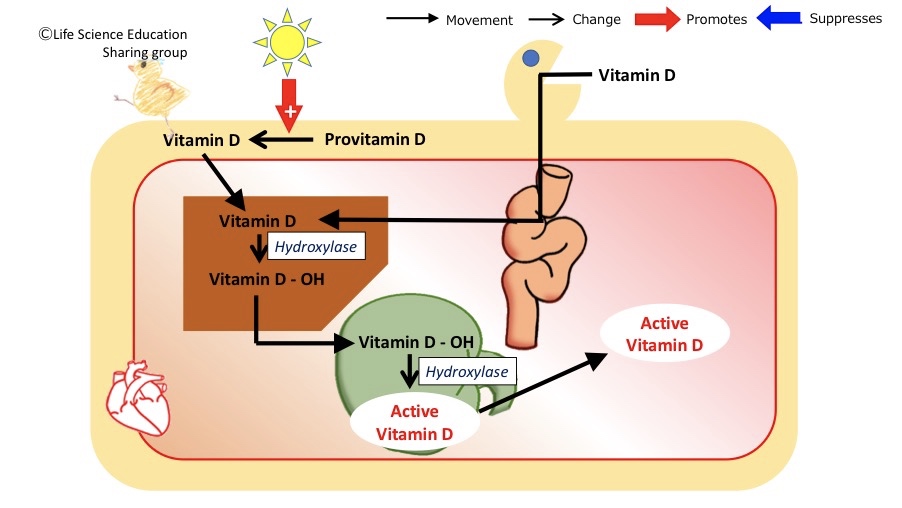「Endocrinology/CaHomeostasis/IntroToVitD」の版間の差分
編集の要約なし |
編集の要約なし |
||
| 10行目: | 10行目: | ||
In the liver Vitamin D is hydroxylated. This hydroxylated Vitamin D enters the circulation where it can be further hydroxylated in the kidney to produce Active Vitamin D. This fully active Vitamin D enters the circulation. | In the liver Vitamin D is hydroxylated. This hydroxylated Vitamin D enters the circulation where it can be further hydroxylated in the kidney to produce Active Vitamin D. This fully active Vitamin D enters the circulation. | ||
Parathyroid Hormone (PTH) controls the hydroxylation process in the kidney. PTH stimulates the production of more active Vitamin D. | |||
2019年6月2日 (日) 20:28時点における版
| Vitamin D may be sourced from the diet or via the conversion of provitamin D in the skin under sunlight. |
An Introduction to Vitamin D
Ultraviolet rays convert Provitamin D in Vitamin D in the skin. This Vitamin D enters the circulation where it is taken up in the liver. Another source of Vitamin D is through absorption by the small intestine, this may also be taken up in the liver.
In the liver Vitamin D is hydroxylated. This hydroxylated Vitamin D enters the circulation where it can be further hydroxylated in the kidney to produce Active Vitamin D. This fully active Vitamin D enters the circulation.
Parathyroid Hormone (PTH) controls the hydroxylation process in the kidney. PTH stimulates the production of more active Vitamin D.
Challenge Quiz
You must wait for the CORRECT! 正確!
<GIFT> //LEVEL:2 //RAND Which TWO of the following are the original sources of Vitamin D prior to entry into the circulation? {=skin~kidney~=GI tract~liver}
//LEVEL:2 //RAND In which of the following organs (two answers) is Vitamin D activated (hydroxylated)? {skin~=kidney~GI tract~=liver}
//LEVEL:2 //RAND Is it possible to have active Vitamin D in your circulation without exposure to sunlight? {=Yes~No}

